- Administrator
- Albums and Singles
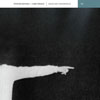 With two brilliant albums recently released (Remain and A Static Place), and time spent playing live with Robert Hampson in the reactivated version of Main, Stephan Mathieu has been leaving quite an impact on me this past year, and this live collaboration with Argentina’s Caro Mikalef continues that streak of genius.
With two brilliant albums recently released (Remain and A Static Place), and time spent playing live with Robert Hampson in the reactivated version of Main, Stephan Mathieu has been leaving quite an impact on me this past year, and this live collaboration with Argentina’s Caro Mikalef continues that streak of genius.
Originally commissioned as an audio-visual piece, Radioland works perfectly well on its own as a purely sonic document.Using only a phonoharp, radios, ebows and processing, the result is a slow, developing piece that never seems to stop developing over its 40-plus minute duration.
Between the use of organic sound sources and the live recording (the performance was recorded through Fender amps via microphones), the natural warmth that Mathieu specializes in shines through on here, which is something too many works such as this often lack.
The performance opens with distant rumblings that eventually swell up and then linger, reverberating off in the darkness.Different layers of sound swell up, mostly just sparse tones early on but they echo beautifully, then recede before they have a chance to overstay their welcome.
Throughout the piece, there is a sense of slow movement.It feels less like a single piece and more like a series, intertwined together perfectly, seamlessly flowing from one to the next.The performance alternates between shimmering, tonal passages that extend forever and more dissonant, textural layers of delicate static.Sometimes there are seemingly infinite strings expanding into space, and other times it sounds like a long-lost garbled radio transmission sneaking in.
Glorious, soaring highs alternate with deep, pensive lows that make this an overall darker work than much of Mathieu’s previous recordings, but it still is undeniably his work.Rich tones and hollow metallic reverberations are eventually met with sheets of white noise towards the final third of the piece, changing the direction somewhat and eventually ending things on an even more dissonant, murky note.
Radioland does have a distinctly different feel than Mathieu's other output, which is likely the result of collaborating with Mikalef, as well as the live setting, but it is by no means weaker.Instead it is a different, slightly darker and rawer sounding performance that stands on its own.The way the different tones and textures segue into one another so well, a natural and dynamic feeling has been established throughout that keeps it fascinating from beginning to end.
samples:
 
Read More
- Administrator
- Albums and Singles
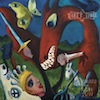 It has been looking less and less likely that Dirty Three would record any new material. Warren Ellis and Jim White left Mick Turner to his own devices in Australia in order to follow their own paths (Ellis’ ending in Paris and White’s journey is on-going through numerous collaborations with other artists). Even though they were touring over the last few years, no new music made its way into their sets. However, the fates have smiled upon us mere mortals as the group finally entered the studio and have returned with another monster of an album.
It has been looking less and less likely that Dirty Three would record any new material. Warren Ellis and Jim White left Mick Turner to his own devices in Australia in order to follow their own paths (Ellis’ ending in Paris and White’s journey is on-going through numerous collaborations with other artists). Even though they were touring over the last few years, no new music made its way into their sets. However, the fates have smiled upon us mere mortals as the group finally entered the studio and have returned with another monster of an album.
 
On the trio’s last album, they broke with tradition to record plenty of shorter pieces instead of their sprawling epics of before. They pick up this mode of working once again, focusing on more succinct arrangements but this time extend their range of moods with Toward the Low Sun. "Furnace Skies" at first sounds like the wrong music has been released under Dirty Three’s name as it has a rougher, more aggressive edge; a grinding loop and ecstatic drumming greets the ears before giving way into the group’s distinctive flavor. A frenetic pace runs the players through the piece like a jockey’s whip during the last furlongs of a race. Ellis’ violin cuts through like the weeping of a gorgeous woman as White’s drums rain down like a storm. A sustained organ melody arises out of the tempest to bring the piece to a calmer, if not peaceful, conclusion.
Elsewhere, a more content vibe runs through "Moon on the Land." This particular piece could fit well in the context of one of Ellis’ soundtracks with Nick Cave, albeit for a far happier plot than they are used to. This cheery demeanor is carried further on "Rising Below," which takes all the nautical beauty of Dirty Three’s classic Ocean Songs album but casts all the sorrow and the sadness overboard. I get the feeling from Towards the Low Sun that Ellis, White and Turner are in a comfortable spot in their respective lives. All the pain and difficulty that they put into their work has dissolved into a hopeful, colorful collection of music.
Considering part of Dirty Three’s immense appeal for me was their melancholic but cathartic energy, this cheering up could be seen as a problem. However, in the transition from She Has No Strings Apollo to Cinder to the current album, they have redefined their music without destroying the core elements of what makes Dirty Three special: three superb musicians on their own wavelength. Pieces like "That Was Was" take all the ingredients at the heart of their music and presents them in a way that seems utterly familiar but new, like an old friend who has gotten married, had children and fought with cancer in the years since you last saw them.
It is hard to believe that Toward the Low Sun has taken so long to appear and that such an extended break in writing and recording has not had a deleterious effect on Dirty Three’s music. In fact, it has reinvigorated it to the point where they sound as vital as ever.
samples:
 
Read More
- Administrator
- Albums and Singles
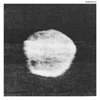 In theory, I should love this project, as it contains members of most of my favorite Bay Area bands (Myrmyr, Barn Owl, Tarentel, etc.).  The reality, however, is a bit complicated: distinctiveness, personality, and ego were all surrendered for the greater glory of these very pure and minimal drones.  This album has some impressive moments, but the participants and their individual talents are almost entirely irrelevant.
In theory, I should love this project, as it contains members of most of my favorite Bay Area bands (Myrmyr, Barn Owl, Tarentel, etc.).  The reality, however, is a bit complicated: distinctiveness, personality, and ego were all surrendered for the greater glory of these very pure and minimal drones.  This album has some impressive moments, but the participants and their individual talents are almost entirely irrelevant.
Amusingly, Portraits' minimalist bent extends even to their song titles, as each of the three pieces here is identified in the most basic, prosaic way possible.  The 20-minute opening piece, "D," is exactly that: a prolonged one-note drone-a-thon.  It's certainly very dense and shimmers and buzzes along quite amiably, but it doesn't offer much more than that, aside from the occasional passing dissonant overtone.  I can appreciate that everyone involved is fascinated with how a bunch of instruments all playing the same note can yield a subtle haze of unexpected oscillations and harmonies, but I don't have the patience or superhuman focus to enjoy that alone as a mere listener.  It'd be a nice jumping off point into something more, yet that doesn't happen here: it is merely a gently swaying thrum that goes on for a very, very long time.
That feat of extreme one-dimensionality is exasperatingly repeated with "Sa," which is essentially the entire ensemble chanting that syllable over a bed of droning strings.  Again, Portraits stick largely to just one note.  I don't understand quite why this piece needed to exist, as it explores exactly the same theme as "D," but does so with less depth and micro-tonal activity.  On the bright side, it is much shorter than its predecessor (under five minutes), so perhaps the band realized that they had entered an indulgent stylistic cul de sac.
Unexpectedly, however, the final piece ("Gong") is quite wonderful.  As expected, it consists solely of gongs, but they are used to supremely ominous and visceral effect: a very deep and tense rumbling is maintained for the entire duration as harsh waves of metallic shimmer ebb and flow across the top of it.  Curiously, it follows exactly the same template as Portraits' other two pieces–in fact, it might even be the simplest of the three.  Despite that, it is hugely successful simply because of the immensity and resonance of the sounds being created.  This is the only piece where I actually felt the oscillations and close harmonies being generated rather than simply hearing them.  That makes a huge difference.  Raw, wall-shaking power is a very useful tool for making cerebral, abstract music seem meaningful and exciting.
I suppose that 12-minutes of heavy, gong-based brilliance is arguably enough to justify this album's existence, but I found this to be a mostly disappointing and puzzling effort.  Much of what Portraits do here has been done to death already and they don't put much of a unique spin on it at all (if anything, they deliberately set out to avoid doing so).  Also, "D" and "Sa" both sound like they could have been bashed out in an afternoon without anyone ever having played together before.  Additionally, I found Barn Owl's involvement in the project to be somewhat bewildering, as they have already done something similar but much, much better with their Infinite Strings Ensemble collaboration–surely they must have realized that something was lacking here.  Striving for transcendental purity in your music is an admirable cause, but the end result should be a bit more compelling than this if it is going to be released.Although gong aficionados certainly have great reason to rejoice, Portraits is ultimately much more notable for who was involved than what they accomplished.
Samples:
 
Read More
- Administrator
- Albums and Singles
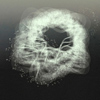 Talvihorros is Ben Chatwin, a London-based guitarist that has been quietly releasing some fairly good albums in the abstract soundscape/drone vein over the last few years.  Then he released a truly great one (this one) and it went woefully under-appreciated and overlooked.  If the world were a fair place, Descent Into Delta would have been all over "Best of 2011" lists.
Talvihorros is Ben Chatwin, a London-based guitarist that has been quietly releasing some fairly good albums in the abstract soundscape/drone vein over the last few years.  Then he released a truly great one (this one) and it went woefully under-appreciated and overlooked.  If the world were a fair place, Descent Into Delta would have been all over "Best of 2011" lists.
Descent derives its title from the brain waves associated with deep sleep, which is a curious but apt theme for this album to have.  It's "curious" because all of these pieces originated as solo guitar improvisations, which are not commonly associated with ambitious conceptual underpinnings.  However, Chatwin spend an enormous amount of time honing that raw material into something larger and deeper and it shows: the completed album feels like a coherent, composed song suite that follows a clear narrative arc from gamma (anxiety) all the way to delta (slumber).  This is actually the first time that Chatwin has assembled an album in this fashion, as his previous studio efforts have had little in common with his live improvisations.
The "apt" part is that this is very heady, dreamlike music.  It shares a lot of common ground with Erik Carlson's recent work as Area C, but the dream state evoked by Chatwin is a considerably darker and more frightening place.  It is also a much denser one, as Ben's original motifs have been painstakingly augmented and layered into something heavier and more haunting than anyone could create with just a guitar and a looping pedal.  This is apparent almost instantly, as the initial shimmer of "Gamma" rapidly escalates into a gnarled howl.
That eventually subsides, however, and "Gamma" segues into the languid and melancholy "Beta."  There's still some bite to it though, as Chatwin buffets his fragile arpeggios with thick, buzzing low-end surges, static intrusions, and distorted guitar squall.  The maelstrom ebbs into an oasis of relative calm near the end, but Ben ingeniously maintains a lingering feeling of tension and dread by sprinkling the comparatively clean and solemn come-down with wrong-sounding notes.  "Beta" is the perfect microcosm for everything that Chatwin does beautifully on Descent Into Delta, as he is able to keep a number of different plates spinning without ever losing the perfect balance: all of the various components vibrantly weave together organically and dynamically.  Also, Ben's clean guitar lines cut through the surrounding chaos and distortion very effectively.  It's like listening to a recording of an earthquake, but still hearing falling icicles with perfect clarity.
"Alpha" is essentially a continuation of "Beta," but it now feels muted and distant.  Again, this is quite deliberate, as alpha waves are synonymous with a state of relaxation.  Most of the dissonance fades away, but Chatwin doesn't allow the piece to become too placid–it just slows way down into glacial throbs mingled with clean, but somewhat blurry and indistinctly twinkling guitars.  It isn't especially relaxing at first either, as the reverie is periodically disrupted by bursts of stuttering or strangled electric guitar.
"Theta" is the dream state and it sounds impressively like a fractured and surreal warping of everything that came before it: a broken, slow-motion version of the arpeggio theme from "Alpha" fades in accompanied by reverberating piano plinks, but both are consumed by washes of heavily processed guitar strumming.  It's quite beautiful and woozy, cohering into slow pulse of sorts (like breathing, actually), but never quite enough to seem predictable.  That is an attention to detail that elevates this album into something pretty amazing–when Chatwin hits upon a great idea (which he does often), he never allows it to repeat in a straightforward way.  Instead, motifs pulse and undulate like they're alive and other sounds artfully appear to twist in and around them.
For the final piece ("Delta," of course), Chatwin is joined by violist Anais Lalange.  It's largely held together by a low drone, but Ben stays very busy unraveling a heavily-chorused slow-motion arpeggio progression.  There's also something that sounds like a buried and mangled accordion in there, but it gradually all fades away to leave only gently rippling harmonics and the muted sadness of Anais's viola.  While it is not as overtly striking as some of the earlier sections of the album, Descent into Delta's sparse denouement might be my favorite part, as the long spaces between notes finally allow me to hear the mesmerizing vapor trails of decay left in their wake.  I don't know quite what Ben did to achieve that effect, but it is quite spectral and beautiful.
I hate the word "masterpiece" and it has obviously been overused to the point of near-meaninglessness, but I think this might be one anyway.  At the very least, I can't imagine anything that Chatwin could've done to make this album better.  In the most obvious sense, this is simply great music and it is complex and multilayered enough to stay compelling after many listens.  On a deeper level though, Descent Into Delta is an absolutely fascinating album to deconstruct and get lost in: it follows a very unusual trajectory (constantly slowing and weakening) and stretches a few recurring motifs into 40-minutes of vibrant, constantly-shifting near-perfection.  Almost every single theme is fluid and unpredictable enough to reward close scrutiny.  It is truly a rare thing for music this coherent, composed, and melodic to hold so much mystery.
Samples:
 
Read More
- Administrator
- Albums and Singles
Techno isn’t a genre that has birthed many consistent albums, and the dub techno subgenre even less so, but one indisputable classic is Porter Ricks’ debut Biokinetics. Originally issued on the legendary Basic Channel sub-label Chain Reaction in 1996 following a trio of 12”s, Biokinetics was the first of the label’s album releases, and still stands as its crowning achievement. The duo was made up of dark ambient pioneer Thomas Koner and sound engineer Andy Mellwig, and between them they re-framed the techno sound, imbuing the spacious ambience pioneered by label bosses Mark Ernestus and Moritz Von Oswald with a frosty, isolated experimental bent, and combining it with the sort of haunted minimalism of early Plastikman.
What separated Biokinetics from other albums at the time was its unwavering narrative – the exact sound has been interpreted countless times since, but the immersive qualities of this singular record have rarely been touched. Maybe it is down to the silvery underwater concept that ties each track together – the bubbling pads, sub-aquatic basses and muffled kick drums. But as with any great album, it’s hard to exactly put your finger on what makes it a classic. Simply put Biokinetics is one of the most important records in the genre, and it’s a pleasure for us to make it available to the world once more.
More information here.

Read More
- Administrator
- Albums and Singles
On the aptly titled Improvisations for Strings and Electronics, Marielle Jakobsons and Agnes Szelag (Myrmyr) team up with cellist Helena Espvall (of Espers) on a series of, you guessed it, improvisations for strings and electronics. Recorded in Oakland, CA, Jakobsons and Szelag created graphic scores for the occasion.
A little while ago Agnes asked me which bands I’d compare this album to. I couldn’t think of a single one. Not even the more classically oriented works of someone like Godspeed! You Black Emperor really come close.
What did immediately leap to mind were the string quartets of contemporary composers Gloria Coates, Morton Feldman, Per Nørgård, and Henryk Górecki. As well, some of the more challenging, discordant and visceral works of Arvo Pärt bear a similarity to the sinuous, winding melodies and stunning tonal landscape created here.
Ethereal and rapturous beauty tempered with sinister, creeping danger looming ominously in the shadows.
CD. 5 tracks / 43:13 mins. Multi-layered handmade transparent outer-sleeve, lino-block printed envelope. Limited edition of 100.
More information here.

Read More
- Administrator
- Albums and Singles
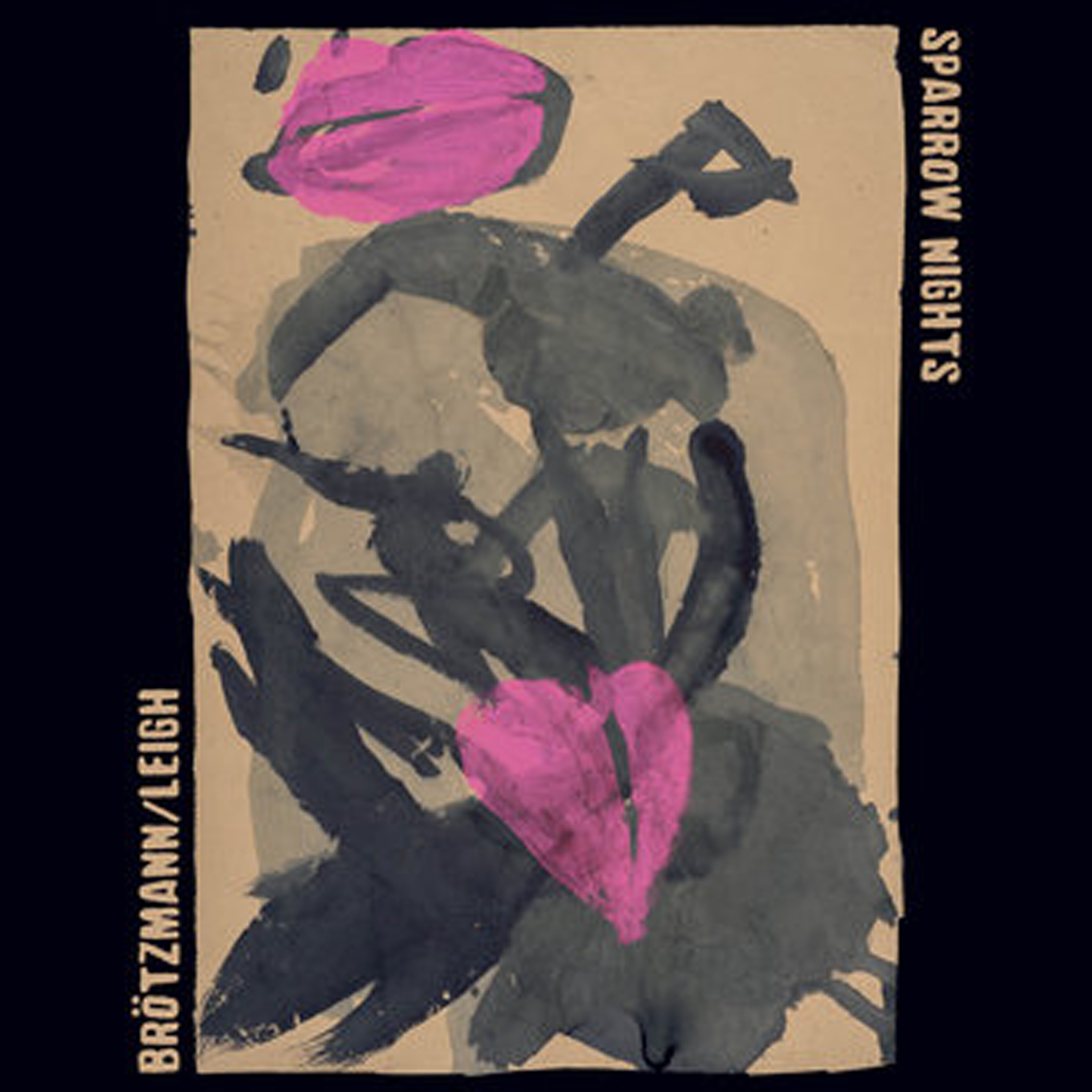 This first studio album from the formidable duo of Peter Brötzmann and Heather Leigh took me an unexpectedly long time to warm to, as it was not at all what I was expecting (skwonking and rapturous free-form flame-throwing). Instead, Sparrow Nights is something considerably more stark, novel, and challenging, unfolding as a uniquely surreal fantasia of alternately gnarled and lyrical saxophone passages over a disorientingly woozy and shifting bed of blurred pedal steel. That said, there are a few comparatively volcanic eruptions of catharsis to found as well, yet the true genius of this album lies primarily in its sprawling and immersive strangeness. As a cumulative and complete work, Sparrow Nights achieves the transcendent indulgence of prime My Cat is an Alien, leaving me feeling weirdly drugged, disoriented, and transformed by the time the last notes fade. That is not a particularly lucrative or instantly gratifying niche, obviously, but Sparrow Nights is more of a legitimate event than it is a mere album.
This first studio album from the formidable duo of Peter Brötzmann and Heather Leigh took me an unexpectedly long time to warm to, as it was not at all what I was expecting (skwonking and rapturous free-form flame-throwing). Instead, Sparrow Nights is something considerably more stark, novel, and challenging, unfolding as a uniquely surreal fantasia of alternately gnarled and lyrical saxophone passages over a disorientingly woozy and shifting bed of blurred pedal steel. That said, there are a few comparatively volcanic eruptions of catharsis to found as well, yet the true genius of this album lies primarily in its sprawling and immersive strangeness. As a cumulative and complete work, Sparrow Nights achieves the transcendent indulgence of prime My Cat is an Alien, leaving me feeling weirdly drugged, disoriented, and transformed by the time the last notes fade. That is not a particularly lucrative or instantly gratifying niche, obviously, but Sparrow Nights is more of a legitimate event than it is a mere album.
It is always interesting to see what happens when multiple visionary/iconic artists with distinctive individual voices come together, even though the results generally tend to be rather underwhelming or forgettable due to time-constraints or lack of chemistry.At best, the result is usually an explosive improvised cacophony that I listen to just once or twice.Despite being disappointed so many times, I still find such pairings too enticing to resist, as every now and then an album like Sparrow Nights turns up and knocks me sideways.Well, not exactly like Sparrow Nights, as this is a one-of-a-kind opus–I am speaking more of a collaboration that offers something completely new rather than the uneven mashing together of two aesthetics.Notably, this album is not even all that similar to the pair's previous collaborations.A large part of that is due to finally recording in a studio, as the duo are able to express considerably more nuance and varying shades of emotion than would be possible in a live setting.However, it is also clear that Brötzmann and Leigh's years of collaboration have blossomed into something wonderful that can only be birthed from artists on the same intuitive wavelength.Trost colorfully describes Sparrow Nights as "cold-forged minimalist blues" and that is probably as apt as anything that I could come up with for this near-uncategorizable album, as long as one's definition of minimalist blues is broad enough to include someone like Jandek.There is definitely an uncluttered intimacy and simmering emotional punch to these recordings, even if they bear no resemblance to conventional blues in any structural way.The essence is what matters and Brötzmann and Leigh channel it beautifully.
For the most part, Brötzmann sets up camp in the foreground and handles all of the heavy lifting melodically.There is quite a lot of variety to what he plays though, as he cycles through an array of different clarinets and saxophones and fluidly moves from sensual melodies to strangled howls to fluttering cascades of notes as the album's mood shifts.As his playing is characteristically and invariably inspired, the degree to which each of these pieces succeed is largely dependent on the beauty or lysergic otherworldliness of Leigh's foundation and how the two threads intertwine and interact.The most instantly gratifying pieces tend to be the ones where Leigh approximates some sort of shivering and shimmering slow-motion dream pop, as she does with the glimmering arpeggios of the opening "Summer Nights" and the lingering, quivering chords of "This Word Love."Most pieces fall into that vein, but Leigh breaks up her approach a bit with the stuttering, wobbling single notes of the title piece and the distorted, howling sustained tones of "This Time Around" (the latter almost sounds like she gave "Here Comes the Bride" the Jimi Hendrix "Star-Spangled Banner" treatment).Picking a clear highlight is extremely difficult, however, as the album feels like a mosaic painstakingly assembled from disparate fragments: the pieces all feel like ephemeral vignettes of varying lengths that are not meant to fully stand on their own.Further complicating matters is the fact that the vinyl and digital/CD versions of Sparrow Nights are radically different albums, as the latter includes ten songs rather than six.Notably, the four additional pieces do not feel like tacked-on bonus tracks so much as they feel like a continued and deeper descent into the album’s hypnagogic, reality-dissolving spell.
Thankfully, that dramatic difference does not create a serious predicament for fans, as Trost makes it easy to get the digital version along with the vinyl, yet it does present two very different listening experiences: a concise and focused selection of (mostly) the more melodic pieces versus a far more indulgent dive into darker and more hallucinatory terrain.For me, the latter is easily the superior album, as late album gems like "At First Sight" and "The Longer We're Apart" make a much more decisive break with reality and achieve a unique seasick nightmarishness.Admittedly, a full album of a pedal steel guitar being abused with such violent vibrato and relentlessly sliding pitches would probably be too overwhelming and mercilessly uncomfortable to take, yet the darkly ecstatic delirium of "The Longer We're Apart" is glorious final act to Sparrow Night’s long, slow, and mesmerizing descent into strange waters (it is like being enveloped in a mindfucking swarm of extra-dimensional bees).There are certainly great Peter Brötzmann albums and great Heather Leigh albums out there, and probably a number of great Brötzmann/Leigh live performances as well, but Sparrow Nights is something totally different than all of them.And at its most challenging heights, it is not much like anything else at all.That is a hell of an achievement.
Read More
- Administrator
- Albums and Singles
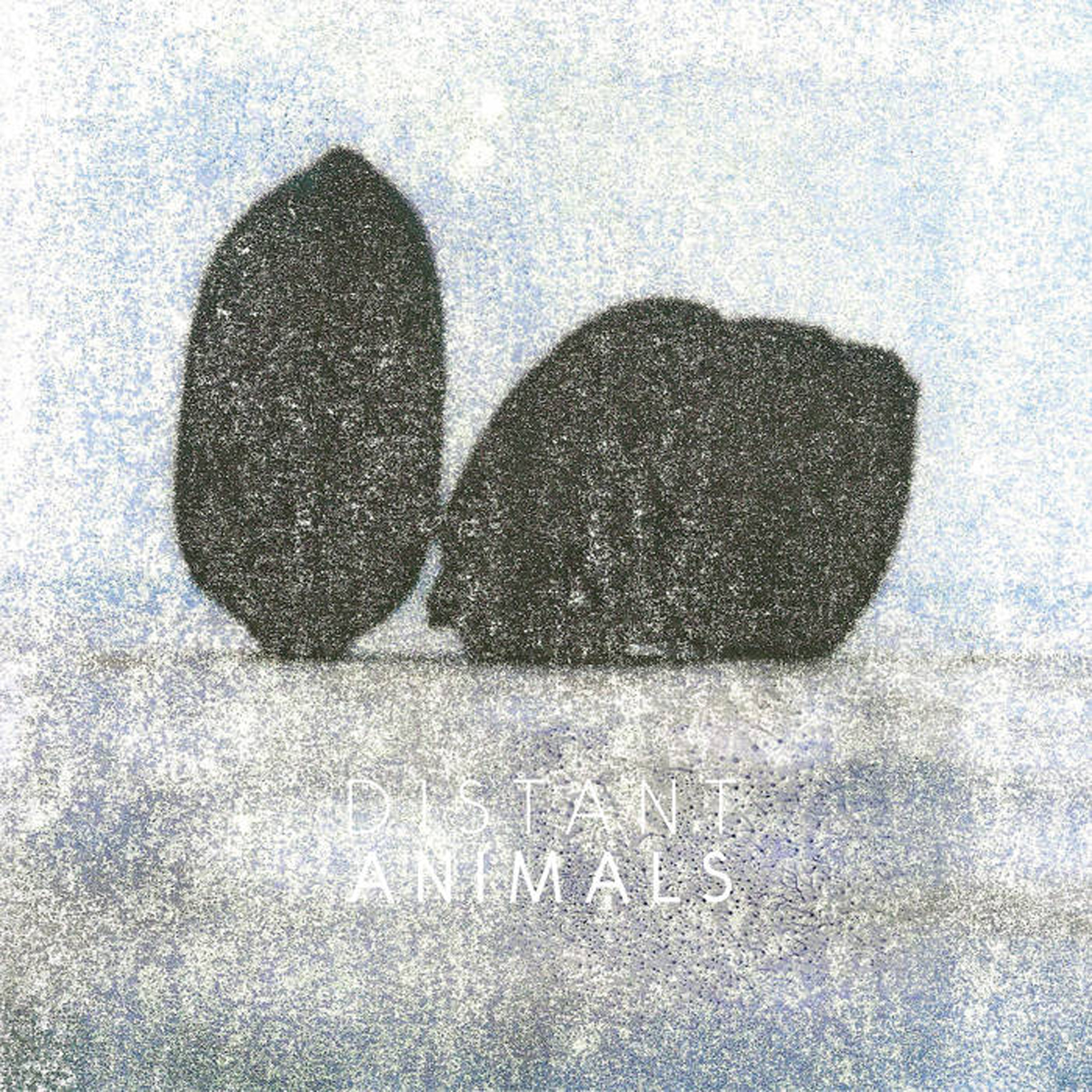
Over the last several years, Hallow Ground’s eclectic curatorial instincts have hit the mark so frequently that I am now deeply curious about anything they release from any artist completely unknown to me. While I do quite not love everything they release, they have unearthed quite a few lost post-industrial gems and are often far ahead of the curve with promising new artists or projects. This project from Daniel Alexander Hignell very much falls into the latter category, wielding the conceptual complexity of a less mischievously arch Hafler Trio to craft a seismic drone opus that falls in roughly the same league as greats like Eliane Radigue and Phill Niblock. The album's second half is admittedly a bit less revelatory, but it does not matter because the opening piece is such an absolute monster.
According to Discogs, this is arguably Distant Animals' debut, but that is somewhat deceptive, as Hignell has been releasing albums under his own name and running the Distant Animals (in a Forest of Signs) imprint for the last several years.Both perversely and appropriately, he completed a doctorate in composition in 2017 and Lines is the first "sonic response" to the research he did on the social function of art-making.That academic background definitely figures heavily into Lines' conceptual underpinning, as it is based on a 130-page text score and includes four postcards documenting a "land-art intervention" related to the text, as well as a print from Layla Tully that "responds to the album's central theme - materiality, substance, emergence, and the process of 'line-making.'"In my experience, album descriptions in that vein generally do not bode well, but there are occasionally some wonderful exceptions like this one.Much like a Merzbow album about, say, bears sounds a hell of a lot like a Merzbow album about eucalyptus trees to any casual listener, those themes are not particularly evident in the actual music.Rather, they just provided the necessary inspiration for Hignell to get to an intriguing place creatively.It is an amusing bit of irony that it took all that research and a doctorate in composition to get to what is essentially a one-note piece (the aptly titled "Pure Drone"), but it also makes complete sense, as the piece is a master class in patience, control, dynamics, and deliciously blackened textures.
"Pure Drone" begins in appropriately simple and pure fashion, as a sustained modular synth tone gently throbs and slowly sweeps.Gradually, however, a cloud of eerie overtones starts to cohere in the periphery, while the drone itself builds into an increasingly shuddering, scorched, and infernal-sounding behemoth.The sheer density and menace of the piece is truly remarkable, as it feels like a slow-motion earthquake is tearing open a portal to hell and that portal is then channeling some kind of demonic version of Tuvan throat singing.In a perfect world, "Pure Drone" would just keep amassing elemental power until my house collapsed around me and the falling roof squashed my stereo, but Hignall sadly lacks the supernatural powers necessary to pull that off, so the piece instead just gradually fades away after about 20 minutes.That presents a bit of problem for Lines, as very little could possibly follow "Pure Drone" and not seem comparatively anticlimactic.Nevertheless, Hignall gamely tries to do the impossible with "Lines Made By Walking," which roughly heads in the opposite direction of its predecessor.Whereas "Pure Drone" was all about focused power and crushing, all-enveloping forward motion, "Lines Made By Walking" starts as a heavy drone and immediately begins dissolving into a roiling morass of sputtering and blurting synth tones and crackling, shorting amp noise.Eventually, it settles into a gently buzzing and beeping ambient reverie, but quickly disintegrates into static before reemerging for a visceral final act that sounds like a nightmarish black mass: deep, distorted bell-like tones mingle with gnarled howls that sound like a field recording of damned souls being played back on a dying record player.
As great as that sounds, however, it does not come close to approaching the majesty of "Pure Drone," as it feels bizarrely fragmented and scattershot, as if several disparate pieces were edited together with varying degrees of success.In fact, the clangorous unpredictability resembles something that might turn up on an early electronic music comp, like a decent but dated Morton Subotnik piece.That is certainly not bad company to be associated with, particularly when Hignell seems to share the same oversized passion for theory and experimentation that drove so many of the late 20th century's iconic composers.Falling within that continuum is nice, but it is definitely a far greater achievement to build on that tradition in a way that feels like a fresh and exciting new chapter.With "Pure Drone," Hignall nails the latter quite decisively.He pulls a very big and improbable rabbit out of his hat with this album, emphatically demonstrating that hyper-minimalism delivered with earth-shaking intensity still has the power to surprise and delight a listener who has been consuming a steady diet of drone masterpieces for years.
Read More
- Administrator
- Albums and Singles
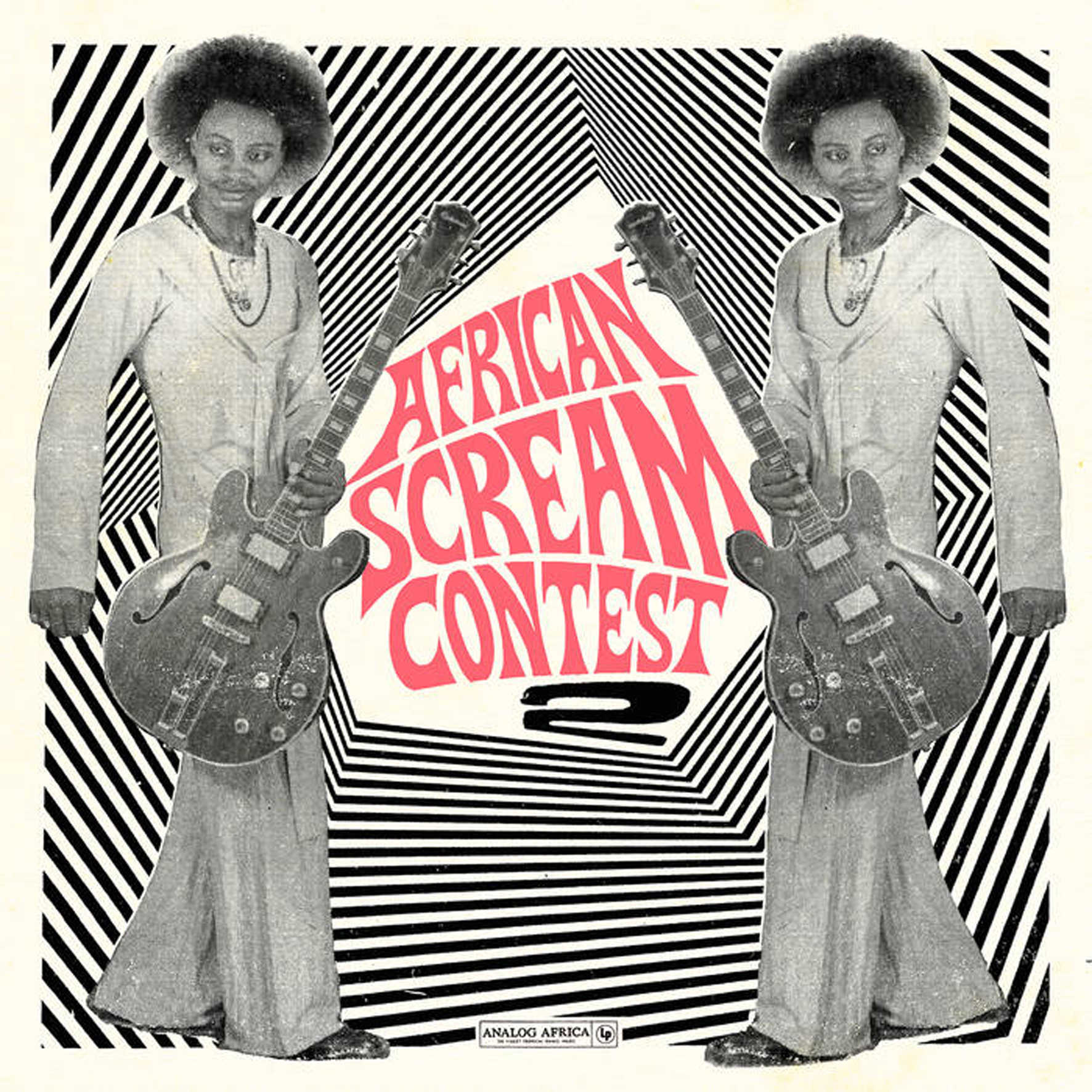 Ten years ago, Analog Africa released the landmark African Scream Contest, an album that instantly established the fledgling label as one of the most intriguing and distinctive imprints in the global crate-digging milieu. It was not exactly a perfect album, but it was certainly a perfect and resounding statement of intent, plunging deep into an eclectic vein of forgotten African funk outside the celebrated regions documented by Soundway, Strut, and Ethiopiques. To celebrate that auspicious anniversary, Samy Ben Redjeb has released one hell of a sequel. Sadly, it will not make quite the same impact as its predecessor, as a new label can only burst onto the scene once, but African Scream Contest 2 is actually the superior album in many ways. Admittedly, some people will be disappointed that a bit of the weirdness and rough edges have been sanded away, which is a category that I would normally expect myself to fall into. Redjeb has gotten significantly better at his job over the last decade though and that definitely shows here, as this latest installment is pared down to a wall-to-wall feast of tight grooves and great hooks that never overstays its welcome.
Ten years ago, Analog Africa released the landmark African Scream Contest, an album that instantly established the fledgling label as one of the most intriguing and distinctive imprints in the global crate-digging milieu. It was not exactly a perfect album, but it was certainly a perfect and resounding statement of intent, plunging deep into an eclectic vein of forgotten African funk outside the celebrated regions documented by Soundway, Strut, and Ethiopiques. To celebrate that auspicious anniversary, Samy Ben Redjeb has released one hell of a sequel. Sadly, it will not make quite the same impact as its predecessor, as a new label can only burst onto the scene once, but African Scream Contest 2 is actually the superior album in many ways. Admittedly, some people will be disappointed that a bit of the weirdness and rough edges have been sanded away, which is a category that I would normally expect myself to fall into. Redjeb has gotten significantly better at his job over the last decade though and that definitely shows here, as this latest installment is pared down to a wall-to-wall feast of tight grooves and great hooks that never overstays its welcome.
Sadly, I do not have the physical version of this album, so I am certain that I missing out on a characteristically improbable and colorful backstory.I do know, however, that Redjeb was able to track down all of these artists primarily because he enlisted the aid of Lokenon André from Les Volcans.Like Redjeb's beloved Orchestre Poly-Rythmo and a couple of other bands, André is a veteran from the first installment and makes a well-deserved return, as his "Glenon Ho Akue" boasts the most endearingly lurching, rolling, and wonderfully off-kilter groove on the entire album.Presumably, André and Les Volcans were able to pull off such rhythmic complexity because they were a "ruthlessly disciplined military band," which brings me to why Lokenon was the ideal person to track down all of the other artists for this collection: he had been trained by the KGB.Hopefully, the rest of the album’s participants have a less morally complex past, yet bizarre details like a Russian-trained Afrofunk mercenary are a large part of what sets Analog Africa compilations apart from everyone else: they are part labor of love, part myth-making, and they revel in all the weird details and amusing anecdotes behind the music.There is certainly scholarship and cultural anthropology happening here as well, but it is almost beside the point.Analog Africa compilations are first and foremost an awesome party thrown by someone with exquisite taste.Nobody in '70s Benin was stroking their beard and noting ambitious time signatures when these bands played–they were dancing and having a great time.
Notably, the fabled Vodoun/ancestral Beninese rhythm element is not nearly as pervasive on this collection as I might have expected, though there are some notable exceptions.For example, Orchestre Poly-Rythmo’s "Moulon Devia" is essentially a straight-up four-on-the-floor disco thump and it is easily one of the album's most smoking grooves.While the mystical history of Benin and the resultant vibrant, unusual percussion are certainly recurring and important themes and make a good story, they are almost eclipsed by the less interesting fact that Benin was improbably teeming with bands that had incredibly tight and fluid rhythm sections.That is what truly stands out the most on the album.The scene also boasted some rather charismatic and "fashion-forward" characters as well.One such oversized personality collides beautifully with tradition and an absolutely killer band on one of the album's final songs, "How Much Love Naturally Cost," as Gnonnas Pedro delivers an amusing monologue over a rolling percussion vamp and an effortlessly infectious bass line.As far as I am concerned, Pedro and the bassist in His Dadjes Band are the breakout stars of the album, as that song is the one moment where an ensemble is truly firing on all cylinders at once and doing so gloriously.There are lot of other great moments strewn throughout the album, however, as it only takes one brilliant hook or performance to whip up one hell of a monster groove.That said, Stanislaw Tohon's "Dja Dja Dja" comes quite close to being yet another glimpse of sublime perfection, masterfully combining a wonderfully shuffling pulse with an stuttering and serpentine guitar motif and a stellar brass section.Elsewhere, El Rego Et Ses Commandos contribute yet another highlight with the soulful, sensual, and latin-tinged "Gangnidodo."
It is worth noting that any great compilation that dives into an underdocumented era or region unavoidably becomes a deceptive bit of revisionist history, either retroactively creating a previously non-existent scene or selectively editing one that did exist so it fits the curator's taste.As such, African Scream Contest 2's 14 songs spanning an entire country's musical output over nearly two decades is far from a representative retrospective.In the right hands, however, such an endeavor can conjure up a truly wonderful illusion, which is exactly why Redjeb's handiwork is such a delight time and time again.This collection brings to light a hugely appealing alternate timeline to the American funk, disco, and soul golden age in which structure is a very fluid and organic thing, eclectic rhythmic adventurousness thrived, and everything sounded like it was recorded by Steve Albini rather than smothered in smooth production.Admittedly, there is a tendency towards freewheeling indulgence as well, but excursions like an extended, wandering organ solo are perfectly welcome if they occur over a suitably vibrant rhythmic backdrop (as nearly every Fela Kuti album illustrates beautifully).African Scream Contest 2 is a sweaty, quirky, fun, and effortlessly sensual album.I suppose that can be said about nearly every Analog Africa compilation to some degree, but the unusually high hit-to-miss ratio of this one makes it one of the best.
Read More
- Administrator
- Albums and Singles
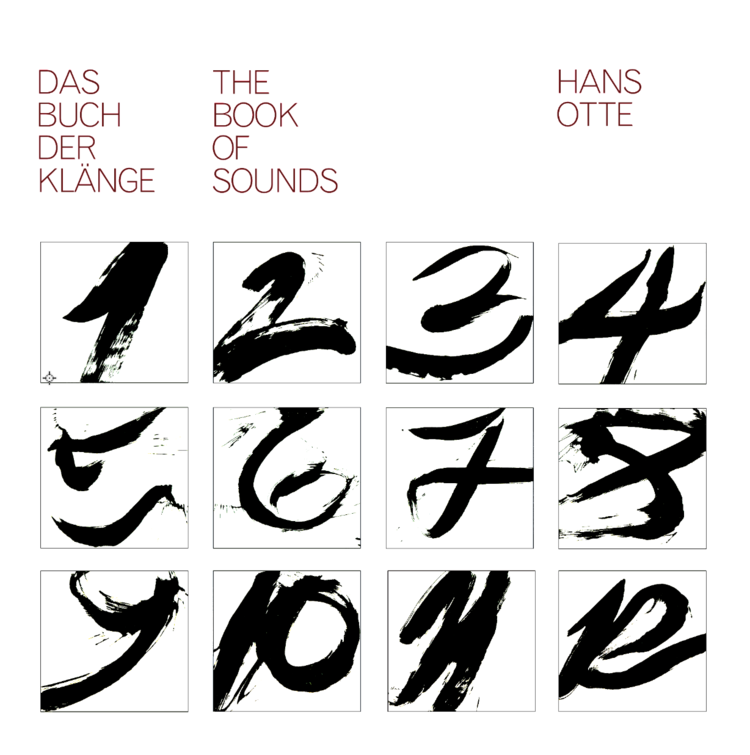 The Book of Sounds was composed between 1979-82, when Hans Otte was reflecting on his previous artistic output, by distilling hundreds of pages of improvisations he had written down, and looking ahead to a future dealing with his cancer diagnosis. The work was originally released in 1984 and consists of 12 solo piano pieces which blend older and newer traditions: the intimacy and poetic style of Chopin and the pantheistic eulogies of Debussy as against the Eastern rhythms and pointillist pulses familiar to Reich and Glass. Yet these influences are subsumed beneath an artistic vision: music stripped to the bone and laid open to deep listening and personal reflection. There is neither great variation nor exact repetition in these 12 tracks. Instead there is a deep exploration of sound, the sound of an acoustic piano, with great emphasis on harmony.
The Book of Sounds was composed between 1979-82, when Hans Otte was reflecting on his previous artistic output, by distilling hundreds of pages of improvisations he had written down, and looking ahead to a future dealing with his cancer diagnosis. The work was originally released in 1984 and consists of 12 solo piano pieces which blend older and newer traditions: the intimacy and poetic style of Chopin and the pantheistic eulogies of Debussy as against the Eastern rhythms and pointillist pulses familiar to Reich and Glass. Yet these influences are subsumed beneath an artistic vision: music stripped to the bone and laid open to deep listening and personal reflection. There is neither great variation nor exact repetition in these 12 tracks. Instead there is a deep exploration of sound, the sound of an acoustic piano, with great emphasis on harmony.
As the tracks are only titled by number all expectation is removed, there is no imagined narrative to follow, or prescribed scenes to imagine. What remains is an opportunity, to follow the sounds to a place where nothing can obscure them. The Book of Sounds documents Otte’s great restraint and focus in creating music both serene and dynamic. As I listened I felt that nothing was forced or lacking in confidence, all seemed to have a natural flow as (in my mind) atoms danced, flames flickered, icicles dripped, silence reigned, waves rolled. Then I began to wonder if there are twelve pieces in reference to twelve tone chromatic scale serialism, the twelve months of the year according to Gregorian, Hindi and other calendars, or something else.
It has been said that Otte is best known for his administrative and promotional work on behalf of others. Indeed, from 1959-84 as head of the music department at Radio Bremen, and by founding the Pro Musica Nova festival, Otte introduced such American artists as John Cage, Terry Riley, Steve Reich, La Monte Young, and others to European audiences. Yet The Book of Sounds can stand with the work of any of those composers. Otte’s goal was to create a work which invited close observation for ‘all those who want to draw close to sound, so that, in the search for the sound of sound, for the secret of life, one’s own resonance is discovered.’
It is not too pretentious to suggest that he achieved that goal. Oddly the years 1979-82 frame a definite ending and beginning period in my own life and it is strange to consider that at the same time in Northern Germany Hans Otte was hard at work on this great recording. He survived his cancer diagnosis and lived until 2007.
 
 
Read More
- Administrator
- Albums and Singles
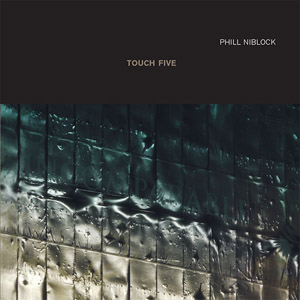 Phill Niblock is an artist that, despite his penchant of expansive, subtle and nuanced recordings, always seems to make every release an epic one. His fifth album for the label (hence the title) is yet again another double disc one that holds only five compositions. Although it takes a conceptually similar approach to those albums, namely Niblock's use of layered instrument drones with microtonal adjustments to pitch, it still has a different feel when placed alongside his other releases.
Phill Niblock is an artist that, despite his penchant of expansive, subtle and nuanced recordings, always seems to make every release an epic one. His fifth album for the label (hence the title) is yet again another double disc one that holds only five compositions. Although it takes a conceptually similar approach to those albums, namely Niblock's use of layered instrument drones with microtonal adjustments to pitch, it still has a different feel when placed alongside his other releases.
The first disc is comprised of two compositions for classical stringed instruments."FeedCorn Ear" (for cello) is unsurprisingly made up of long, bowed notes that seem to stretch into eternity with Niblock's post-production consisting of a very light touch, but one that emphasizes the hidden microtones and natural audio variations.Arne Deforce's playing deserves recognition as well, as his steady hand enhances the purity of sound that Niblock deconstructs. The different layers rise and fall, twisting and turning like braided wires of pure sound into a massive sonic expanse.Toward the end of its 30 minute duration, only the slightest traces of cello remains and instead is simply a cloud of delicate tones and sound. In total it is a lighter work compared to Deforce's performances on "Poure" and "Harm" two cello compositions on previous Niblock releases.
The second piece, "A Cage of Stars," is for electric harp and performed by Rhodri Davies with both a traditional bow and an e-bow.Leading off with a bit of sparkling noise, it soon settles into a sustained wall of microscopically shifting tones that build atop one another.Towards its conclusion there is a much more significant emphasis on the lower end of the spectrum, which again ends it in a different place than it began.Even though it is just a single performance, the layering and tweaking to the final results in a composition that sounds as if it were performed by an entire orchestra.
Disc Two consists of three different performances of the 23 minute composition "Two Lips" by three different guitar quartets.Each player performed the score ten times in a single session with the faintest of tonal variations.The first, performed by Zwerm, is surprisingly inorganic sounding at first blush due to a heavy use of effects, but eventually takes on a more traditional electric guitar sound.The fuzzy leading tones trade off with each other with each player shifting from lower to high register drones being produced.
The second performance, by the Dither guitar quartet, begins with a more intense approach, with organ like wavering sustains cutting through the tonal mass sharply.Towards its conclusion the liberal use of flange and chorus effects imbues it with a distinct feel, getting a bit more psychedelic in the process.The final performance, by the Coh Da quartet (Ad Hoc, featuring Robert Poss and Susan Stenger) comes across as even more abstracted from guitar, with each player producing passages resembling organ and harmonium drones than traditional electric guitar.
Phill Niblock's work is often challenging, and Touch Five is no exception.It requires a focused and dedicated ear to absorb the slow changes and evolution in these long compositions.For those with the time and the patience though, his work rewards like no other in its purity and hidden complexity.
samples:
 
Read More


